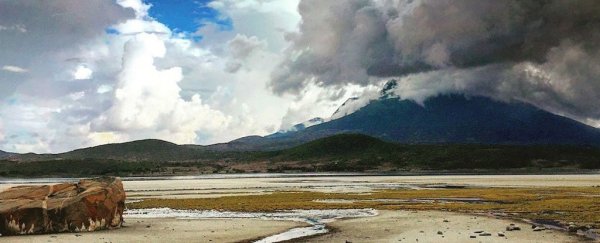New analysis of a gargantuan helium deposit discovered in Tanzania last year has revealed that there may be much more of the gas than initial surveys revealed.
At the time, the find, called "life-saving," was estimated to contain at least 54 billion cubic feet (1.5 billion cubic metres). To put that in perspective, domestic helium consumption in the US for 2016 was 1.7 billion cubic feet, and the US has total known helium reserves of 153 billion cubic feet.
Now, according to new measurements taken of the helium, there could be a lot more than that - around 98.6 billion cubic feet, according to Thomas Abraham-James, CEO of helium company Helium One.
"It's pretty much doubled in size," he told Live Science.
The global helium shortage affects a lot more than blimps and party balloons.
Helium is used to cool the magnetic resonance magnets in MRI machines, and it's also used as a coolant for nuclear magnetic resonance and at the Large Hadron Collider. NASA uses it in rocket fuel, and it's also used as a carrier gas in gas chromatography and mass spectroscopy.
The new estimates were based on new, real-time measurements taken by University of Oxford geologists Peter Barry and Chris Ballentine in late 2016. The field-sampling methods used in 2015 for the initial estimate allowed air into the sample, so the density of helium showed as much lower than it should have.
"Detailed macroseep gas compositions … shows the deep gas to contain between 8-10 percent helium, significantly increasing resource estimates based on uncorrected values," Barry and Ballentine wrote in the abstract of a paper they presented in August at the 2017 Goldschmidt Conference.
The initial samples contained an average of 2.6 percent helium. For those, the samples were collected in the field and taken back to laboratory for analysis. By comparison, for last year's survey, Barry and Ballentine used a portable mass spectrometer.
"We made probably 50 measurements out there in the field, and we saw up to four times as much helium in these samples," Barry said. "So this was really exciting for us, because we were able to show quite convincingly that there's a lot more helium than we originally assessed."
The deposit found last year could turn things around - not just because of its size, but how it was found.
The research team found that volcanic activity releases helium trapped deep underground into shallower pockets closer to the Earth's surface. Armed with this information, they went looking for a helium deposit - and found it.
At the time the discovery was announced, Ballentine said that 54 billion cubic feet was enough to fill 1.2 million MRI machines. The new estimate of 98.6 billion cubic feet could fill 2.2 million.
And, according to Abraham-James, that estimate is conservative.
"We are probably still somewhat understating what is present, but nevertheless, that gives us room to update and improve as we progress," he said.
